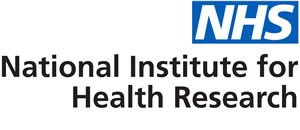A revolutionary treatment to reduce osteoporotic bone fracture risk using biodegradable porous beads.
PROJECT SUMMARY
The MIDOs study is a collaborative project between academics, clinicians and Small and Medium Enterprises (SMEs) across the UK led by researchers at the University of Nottingham. The project was supported by an award of £1.2m from the NIHR Invention for Innovation (i4i) scheme to develop a novel prophylactic treatment to reduce bone fracture risk in patients with osteoporosis using calcium phosphate microspheres.
The NIHR Trauma Management MedTech Co-operative (Trauma MIC) assisted in the PPI arm of this trial to ensure the views of patients were heard and taken on board.
CLINICAL NEED
According to NICE Clinical Guideline CG146:1
Osteoporosis leads to nearly 9 million fractures annually worldwide, and over 300,000 patients present with fragility fractures to hospitals in the UK each year.
Hip fracture nearly always requires hospitalisation, is fatal in 20% of cases and permanently disables 50% of those affected; only 30% of patients fully recover. Projections suggest that, in the UK, hip fracture incidence will rise from 70,000 per year in 2006 to 91,500 in 2015 and 101,000 in 2020.
Direct medical costs from fragility fractures to the UK healthcare economy were estimated at £1.8 billion in 2000, with the potential to increase to £2.2 billion by 2025. Most of these costs relating to hip fracture care.
THE SOLUTION
The MIDOs project is developing novel biodegradable porous beads (referred to as microspheres) which has the potential to revolutionise the way treatments are administered for osteoporotic patients at risk of bone fracture, by helping to repair and regenerate new bone tissue.
The potential impact on patient health is due to the benefit of the proposed technology to be used as a prophylactic and/or (trauma) preventative measure. This will be done by identifying patient populations at risk of fracture from osteoporosis and regenerating their bone tissue via a minimally invasive injection. There are also operational benefits to healthcare providers via reduced trauma and reductions in waiting lists.
The i4i funded project has now been completed and the results are being used to secure further funding to move the development toward clinical trials. These would include tests to prove and confirm the efficacy of these microspheres, initial pre-clinical trials followed by clinical trials.
TRAUMA MIC CONTRIBUTION
The Trauma MIC assisted in leading the development and execution of the PPI program for this study. In collaboration with the National Osteoporosis Society, a survey was disseminated to determine:
- Public experiences of current treatments
- Public opinion on the preferred method of extracting stem cells for the treatment
Additional patient opinions were obtained by distributing the surveys directly through NHS clinics. The information provided will be used to inform the design of the final treatment process, as well as assessing the suitability of the online risk tools for selecting patients for the new treatment.
The project commenced in November 2015. Since then MIC has:
- Engaged Ms Hilary Brown, Senior Fellow at the Health Services Management Centre, University of Birmingham to co-ordinate the PPI study.
- Developed input from focus group volunteers recruited from the Birmingham 1000 Elders Group. This survey has now been distributed via the National Osteoporosis Society (NOS) NOS newsletter and magazine and received >160 responses.
- Developed a protocol, and obtained ethics committee and governance approval for the distribution of the survey directly to NHS osteoporosis patients
- Distributed the questionnaire, collated responses and added the results to the NOS survey. The results were returned to the lead researchers for consideration in the design of subsequent studies.
REFERENCES
[1] National Institute for Health and Clinical Excellence (2012) Osteoporosis: assessing the risk of fragility fracture. NICE guideline (CG146)

